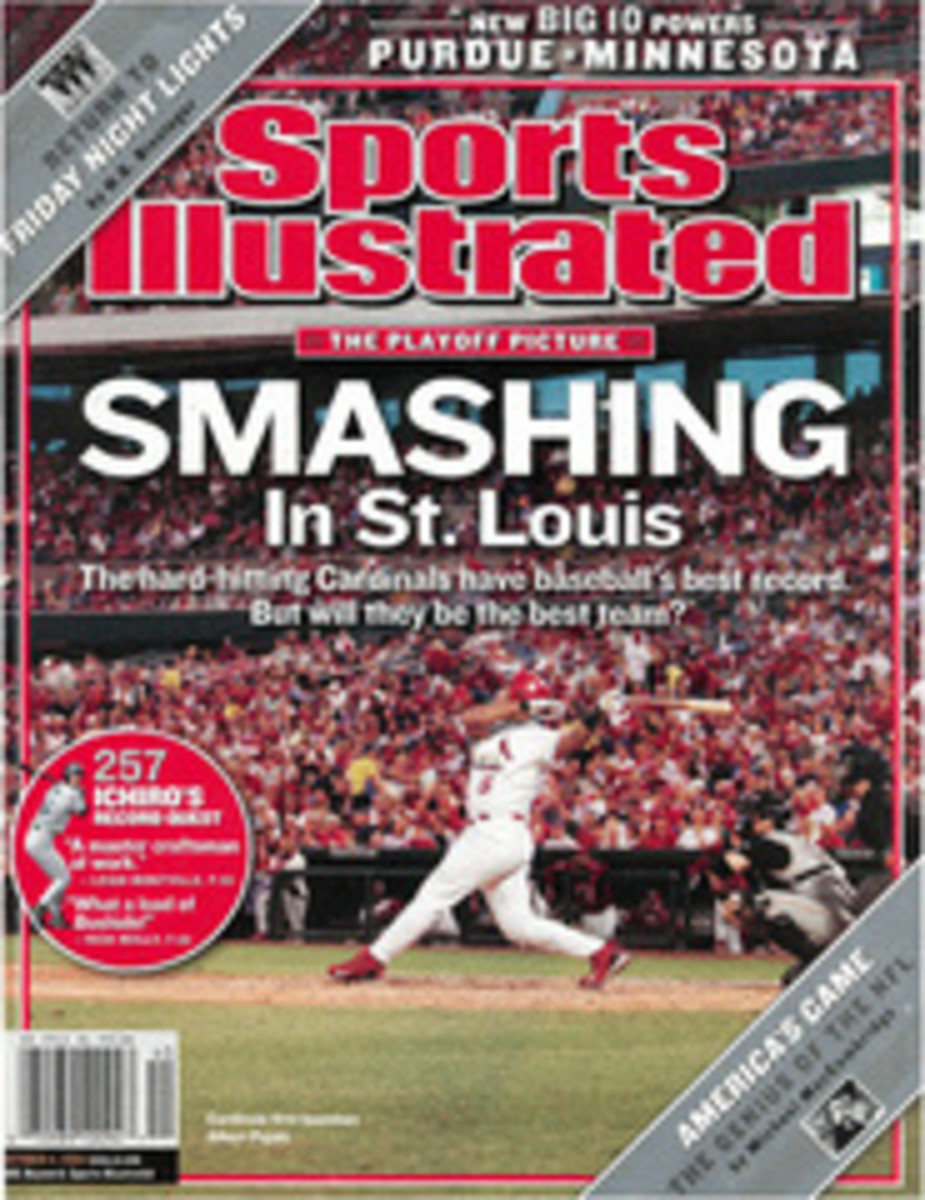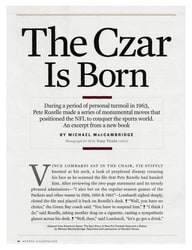
The Single Guy
Take a moment in the last week of the baseball season to watch a master craftsman at work. Mr. Ichiro Suzuki, native of Kasugai, Japan, resident of Seattle, Wash., is putting the final few hand stitches into a record that probably is going to last for a very long while.
Note the detail as he adds single after single to a final base hit total that will eclipse the record of 257 set by George Sisler of the St. Louis Browns in 1920. Admire the concentration, drive, determination. A line drive here, a bloop there, a leg hit on a ground ball not so deep into the hole at short ... watch the slender 30-year-old rightfielder put together one modern mark of substance that can hang with the achievements of the long-ago Rembrandts and Picassos of his game.
No devalued currency here. No plastic parts. In a time when action is stopped every other night in every sport to celebrate another "milestone" with the presentation of a new SUV and a lifetime pass to immortality, Ichiro's work stands pretty much alone. No BALCO questions. (How would steroids help?) No equipment arguments. (In fact, the basket-sized gloves and the well-groomed infields of today work against him.) No aids from wind, water or hyperactive press agents.
Ichiro has worked inside the same 90-foot-by-90-foot square that every player in the history of baseball has had to confront. The other dimensions of the ballpark--bigger or smaller, fences higher or lower, lights on or lights off--have not mattered. His opponents have been free to array four infielders in any formation possible, same as always in this green-grass time capsule, and Ichiro, better than anyone who ever lived, has been able to hit 'em where they ain't.
A few stats from his remarkable season:
•He broke both the modern record of 198 singles set by Lloyd Waner in 1927 and the alltime record of 206 by Wee Willie Keeler in 1898. (He had 207 singles by Sept. 21.)
•He is one of only 11 players to have four consecutive 200-hit seasons, and he's the only one to do it in his first four big league seasons. Only Keeler, Wade Boggs, Chuck Klein, Al Simmons and Charlie Gehringer had more consecutive 200-hit seasons.
•He is the first player since 1930 to have 250 hits in a season and only the third player, along with Boggs in 1985 and Darrin Erstad in 2000, in 84 years to have 240. (Ichiro also had 242 hits in 2001.) Pete Rose, the self-proclaimed Hit King, never had more than 230.
There have been detractors for this singles-filled record--look no further than the back page of this magazine to find Rick Reilly or those who whisper that anyone could get that many hits if they tried to hit a single every time up--but they have been caught in the modern oompah of noise and money and exploding scoreboards. They miss the point. This is the art-house masterpiece, not the box-office money champ, the simple song sung without dancers and wardrobe malfunctions. Excellence is not always sexy and exciting. This is a PBS record, not HBO.
Ichiro's excellence is seen in the distilled confrontation between the batter and the pitcher. Throw away all the other camera angles. Throw away all the other stats that come from Maven Central, the on-base percentages and the slugging averages and all the rest. Throw away even the wins and losses. One man is trying to reach base. One man is trying to stop him. Who wins?
Watch as Ichiro is not fooled by the kicks, turns and strange release points of the various pitchers on the mound. Watch as he gauges speed, direction, the spin on the baseball. Watch as he fouls off the pitches that fool him most, the same way Boggs did for so many seasons with the Red Sox and the Yankees. Watch as he leans, seems to be taking off as he swings at the pitch he wants, heading to first, got to go. Watch as he beats yet another throw for yet another base hit.
The singles hitter always will be played down in baseball, and there will always be the call for Ichiro to swing harder, to try to hit the home runs he has no trouble hitting in batting practice. Ah, but this is not the way he works. He builds his record with matchsticks, one base at a time.
Want home runs? Take Ichiro Suzuki's record-setting base hit haul at the end of the season and divide by four. He went past 60 homers when he passed 240 hits. He just did it on the installment plan.
A Hitting Machine
Any pitch, any time, any place, any situation--you throw it, Ichiro will hit it
[originallink:10801021:708822]
.279 | .543 | .259 |
.435 | .444 | .417 |
.321 | .333 | .269 |
SOURCE: INSIDE EDGE, INC.
So how do you pitch a guy who had 251 hits in the season's first 155 games? As the chart above shows, your best bet at getting Ichiro out is to go up and away. Faced with pitches in that zone, he's batting a mere .259. If you go upstairs, though, make sure you find a corner. On high pitches over the plate, he's hitting at a smooth .543 clip. As for what to throw him, the only thing that bothers Ichiro less than a big hook (he's hitting .393 when putting a curveball in play) is heat (.401 on fastballs). Your best bet? Throw a splitter (.190) and hope he doesn't leg out a grounder. But if he does put the ball in play--and he will put the ball in play; he's swung and missed only once every 6.52 plate appearances--you're not going to beat him with positioning. As the chart below shows, he's an equal-opportunity hitter.
Leigh Montville is the author of Ted Williams: The Biographyof an American Hero.
COLOR ILLUSTRATION
ILLUSTRATION BY STEVE BRODNER
COLOR PHOTO
TED S. WARREN/AP (ICHIRO)
COLOR CHART
SLIM FILMS (HIT DISTRIBUTION CHART)
  Key Single
Double
Triple
Home Run

